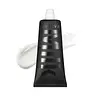What's inside
What's inside
 Key Ingredients
Key Ingredients

 Benefits
Benefits

 Concerns
Concerns

 Ingredients Side-by-side
Ingredients Side-by-side

Water
Skin ConditioningSilica
AbrasivePropanediol
SolventNylon-11
Pentylene Glycol
Skin ConditioningNiacinamide
SmoothingPolyglyceryl-10 Diisostearate
EmulsifyingDicaprylyl Ether
EmollientCorn Starch Modified
AbsorbentBakuchiol
AntimicrobialParfum
MaskingHamamelis Virginiana Water
AstringentButyrospermum Parkii Butter Unsaponifiables
Skin ConditioningLens Esculenta Seed Extract
Skin ProtectingShorea Robusta Seed Butter
EmollientCoffea Arabica Seed Oil
MaskingGlycine Soja Oil
EmollientTocopherol
AntioxidantMoonstone Powder
Skin ConditioningGlyceryl Undecylenate
EmollientEthyl Stearate
EmollientEthyl Palmitate
EmollientEthyl Oleate
EmollientEthyl Linoleate
EmollientAcrylates/Beheneth-25 Methacrylate Copolymer
Ethyl Macadamiate
Skin ConditioningMalic Acid
BufferingSodium Carbomer
Emulsion StabilisingSaccharide Isomerate
HumectantSodium Hyaluronate
HumectantSodium Hydroxide
BufferingTrisodium Ethylenediamine Disuccinate
Ethylhexylglycerin
Skin ConditioningGlyceryl Caprylate
EmollientPhenoxyethanol
PreservativeLinalool
PerfumingWater, Silica, Propanediol, Nylon-11, Pentylene Glycol, Niacinamide, Polyglyceryl-10 Diisostearate, Dicaprylyl Ether, Corn Starch Modified, Bakuchiol, Parfum, Hamamelis Virginiana Water, Butyrospermum Parkii Butter Unsaponifiables, Lens Esculenta Seed Extract, Shorea Robusta Seed Butter, Coffea Arabica Seed Oil, Glycine Soja Oil, Tocopherol, Moonstone Powder, Glyceryl Undecylenate, Ethyl Stearate, Ethyl Palmitate, Ethyl Oleate, Ethyl Linoleate, Acrylates/Beheneth-25 Methacrylate Copolymer, Ethyl Macadamiate, Malic Acid, Sodium Carbomer, Saccharide Isomerate, Sodium Hyaluronate, Sodium Hydroxide, Trisodium Ethylenediamine Disuccinate, Ethylhexylglycerin, Glyceryl Caprylate, Phenoxyethanol, Linalool
Water
Skin ConditioningCaprylic/Capric Triglyceride
MaskingStearyl Alcohol
EmollientGlycerin
HumectantCetyl Alcohol
EmollientGlyceryl Stearate Citrate
EmollientCetearyl Alcohol
EmollientSilica
AbrasiveRubus Idaeus Seed Oil
EmollientGlyceryl Caprylate
EmollientTheobroma Cacao Fruit Powder
Skin ConditioningUbiquinone
AntioxidantSodium Anisate
AntimicrobialSodium Levulinate
Skin ConditioningGalactoarabinan
Phenoxyethanol
PreservativeBenzyl Alcohol
PerfumingIngredients Explained
These ingredients are found in both products.
Ingredients higher up in an ingredient list are typically present in a larger amount.
Glyceryl Caprylate comes from glycerin and caprylic acid, a fatty acid from coconut. It has emollient and emulsifier properties.
As an emollient, it helps hydrate your skin. Emollients work by creating a barrier on your skin to trap moisture in, helping to keep your skin soft and smooth.
On the other hand, emulsifiers prevent ingredients (such as oil and water) from separating.
Learn more about Glyceryl CaprylatePhenoxyethanol is a preservative that has germicide, antimicrobial, and aromatic properties. Studies show that phenoxyethanol can prevent microbial growth. By itself, it has a scent that is similar to that of a rose.
It's often used in formulations along with Caprylyl Glycol to preserve the shelf life of products.
Silica, also known as silicon dioxide, is a naturally occurring mineral. It is used as a fine, spherical, and porous powder in cosmetics.
Though it has exfoliant properties, the function of silica varies depending on the product.
The unique structure of silica enhances the spreadability and adds smoothness, making it a great texture enhancer.
It is also used as an active carrier, emulsifier, and mattifier due to its ability to absorb excess oil.
In some products, tiny microneedles called spicules are made from silica or hydrolyzed sponge. When you rub them in, they lightly polish away dead skin layers and enhance the penetration of active ingredients.
Learn more about SilicaWater. It's the most common cosmetic ingredient of all. You'll usually see it at the top of ingredient lists, meaning that it makes up the largest part of the product.
So why is it so popular? Water most often acts as a solvent - this means that it helps dissolve other ingredients into the formulation.
You'll also recognize water as that liquid we all need to stay alive. If you see this, drink a glass of water. Stay hydrated!
Learn more about Water